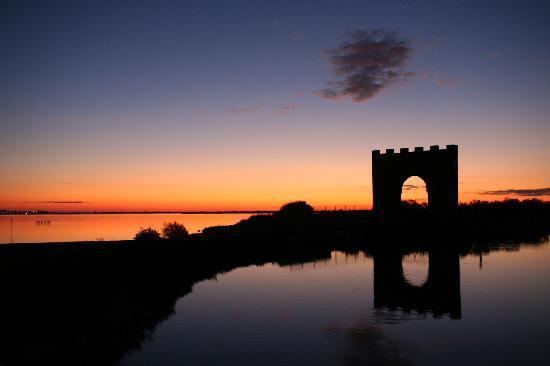Country France Canton Pignan Population 7,351 (1999) | Region Occitanie Local time Monday 5:46 PM | |
 | ||
Weather 22°C, Wind SW at 11 km/h, 46% Humidity Points of interest Maguelone Cathedral, Les Rochers de Maguelo, Centre d'Animation, La Porte De Maguelone | ||
Combat d un p re la prison de villeneuve l s maguelone
Villeneuve-lès-Maguelone (Occitan: Vilanòva de Magalona) is a commune in the Hérault department in the Occitanie region in southern France.
Contents
- Combat d un p re la prison de villeneuve l s maguelone
- Map of Villeneuve lC3A8s Maguelone France
- Etymology
- History
- Sights
- References
Map of Villeneuve-l%C3%A8s-Maguelone, France
Etymology
The name Maguelone is a variation of Latin "margarita" (pearl), from Persian "margaritis" - in modern French the "marguerite" (daisy) took its name from the precious stone. The ending is probably a misattribution: "-ita" is a common Romance feminine diminutive suffix, equivalent in meaning to the Occitan "-ona".
History
Maguelone (or Maguelon) was one of the "seven cities" that may have been the origin of the name for the region called Septimania. Septimania was the western region of the Roman province of Gallia Narbonensis, which passed under the control of the Visigothic kingdom in 462, when Septimania was ceded to Theodoric II, king of the Visigoths. The seven cities were today's Elne, Agde, Narbonne, Lodève, Béziers, Nîmes and Maguelone.
In the aftermath of the Battle of Vouille (507), Maguelone managed to remain out of Frankish sway, and was part of the Visigothic kingdom. At first the stronghold of a Visigothic noble, on high ground protected by coastal lagoons, Maguelone became the seat of a bishop. When the early history of Maguelone was compiled in 1583 by Abbé Gariel (Histoire des évêques de Maguelonne) he provided the see with an apostolic origin, as is de rigueur for any long-established bishopric of Late Antiquity throughout the three Gauls. The first historical bishop of Maguelonne assisted at the Council of Narbonne in 589; doubtless the Christian community was far older.
In the 8th century (circa 725) the Umayyad forces conquered the area, but the stronghold was destroyed by Charles Martel in his 737 campaign across Septimania, almost depopulating the region. The Gallo-Roman and Gothic nobility allied with the Andalusian military kept the position until 752, when Pepin the Short tipped the scale in favour of the Franks, who conquered Septimania.
The diocese was removed to Substantion, but Bishop Arnaud (1030–1060) returned it, rebuilt the destroyed sanctuary and constructed a bridge to link Maguelone to the "new district" of Villeneuve. The powerful and compact Romanesque Maguelone Cathedral, dedicated to Saint Peter, was constructed.
The local count retained the traditional Carolingian right of nomination of bishops: in 1085 Pierre, count of Substantion and Melgueil, offered himself as vassal of the Holy See and relinquished the right of nomination, and Innocent III transferred the feudal rights of the county to the bishop of Maguelonne in 1215, which gave the bishops the right to issue coinage. The bishop, as well as the King of Aragon and the Count of Toulouse, authorized the coinage of Arabic money, not intended for circulation in Maguelonne, but to be sold for exportation to the merchants of the Mediterranean.
With the expansion of trade in the revival of the High Middle Ages, Montpellier came to be the city for this region, first passing to the Crown of Aragon in 1204, then to that of France (1292 and 1349). In 1536 the see was finally transferred there.
A sentimental and chivalric romance of the high-born Miguelonne and Pierre, the son of the King of Provence, who recognized each other in their old age after many heartbreaking separations, inspired a verse: Epistle by Clément Marot.
For the history of the bishopric of Maguelonne, see Bishopric of Montpellier as the episcopal see was transferred there in 1536
